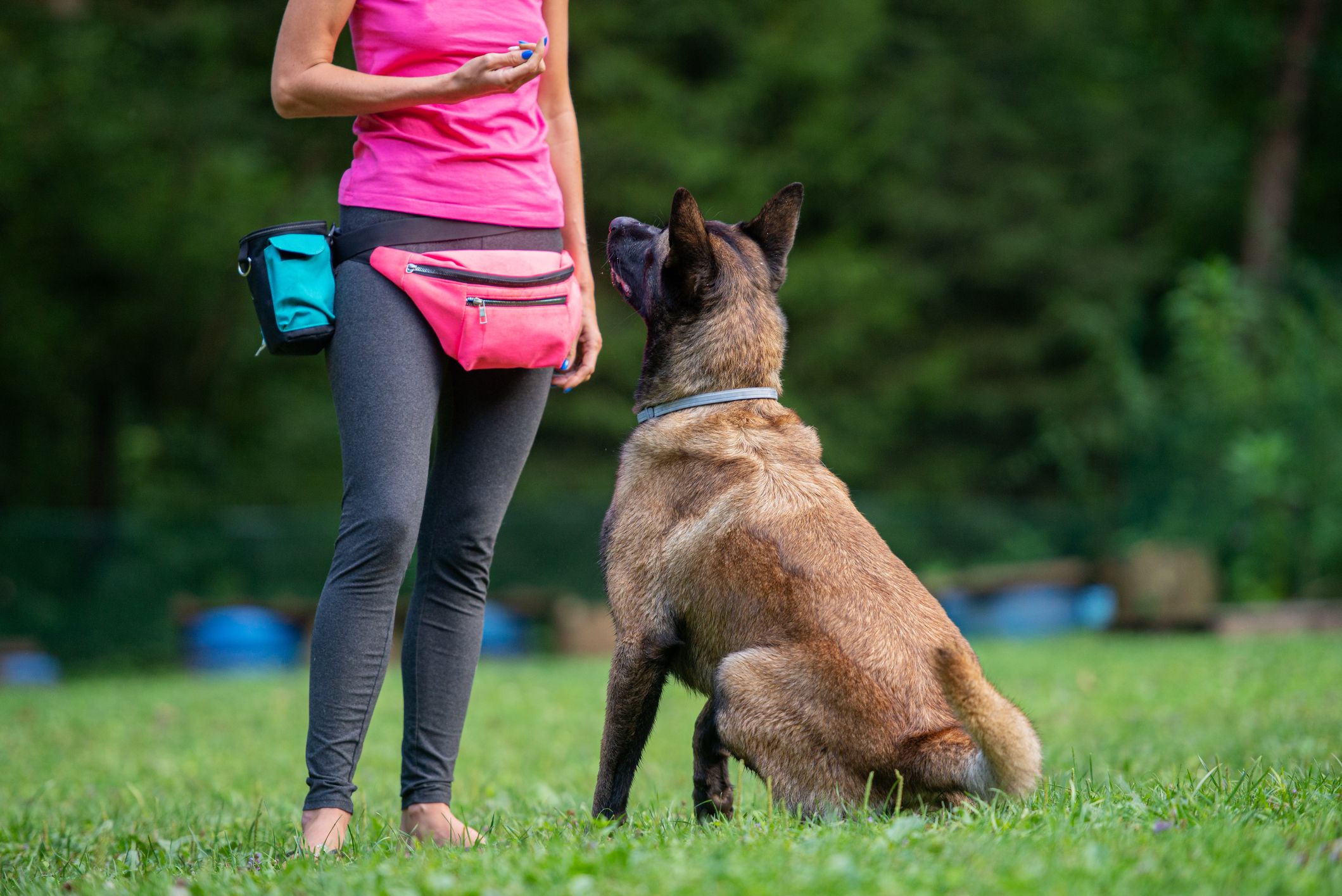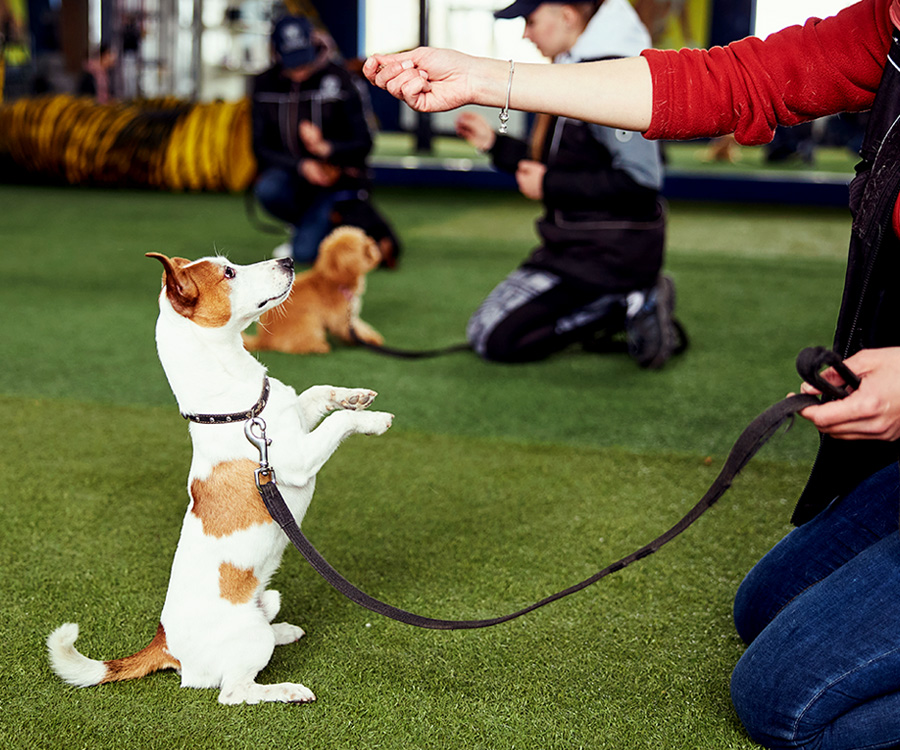How Dog Training Builds Trust and Confidence in Your Dog
How Dog Training Builds Trust and Confidence in Your Dog
Blog Article
Beginner's Guide to Successful Pet Dog Training in the house
Efficiently training a canine at home calls for a nuanced understanding of canine actions and effective interaction methods. Developing clear training objectives, making use of top quality benefits, and preserving uniformity across household participants are important elements. Integrating training right into day-to-day regimens can enhance both engagement and retention.
Comprehending Dog Habits
Comprehending canine habits is necessary for reliable training and cultivating an unified relationship between human beings and their canine friends. Dogs communicate mostly via body movement, vocalizations, and face expressions, making it critical for proprietors to analyze these signals accurately. Recognizing behaviors such as tail wagging, roaring, or shrinking can give insights into a canine's psychological state and objectives.

Typical behavioral problems, such as hostility, anxiety, or extreme barking, frequently come from misunderstandings or unmet requirements. Observing and resolving these problems promptly can avoid rise and ensure a positive training experience. By cultivating a deep understanding of dog behavior, owners can customize their training approaches to match their canine companions, inevitably leading to a satisfied and well-behaved pet.
Crucial Training Devices
A well-appointed training room can considerably improve the performance of dog training in your home. Important training tools make certain that both the canine and the fitness instructor can participate in productive sessions that cultivate learning and bonding.

Purchasing a sturdy chain and a comfortable, well-fitting collar or harness is crucial for safety and control. These devices aid establish borders and make certain the canine stays safe and secure throughout training. Additionally, a marked training location, devoid of diversions, aids concentration for both the dog and the instructor.
Educating aids such as training pads, cones, or agility tools can likewise enhance the experience by presenting range and difficulties. Last but not least, having a notebook or digital app for tracking development can be vital, permitting you to keep in mind successes and locations for enhancement. Using these vital tools will certainly create a positive training setting and lay the structure for reliable understanding.
Creating an Educating Routine
Developing a consistent training routine is essential for reliable pet training at home. A well-structured regular not only assists in strengthening wanted actions yet also offers your pet with a complacency and predictability. To produce an efficient training regular, begin by recognizing specific training goals, such as basic commands, chain strolling, or house-breaking.
Choose a marked time daily for training sessions, ideally when your dog is receptive and alert. Procedure needs to be short, around 5 to 15 mins, to maintain emphasis and protect against exhaustion. Consistency in timing and atmosphere will enhance your canine's understanding experience.
Include training right into day-to-day activities to enhance abilities. Practice commands throughout walks or nourishment, which incorporates finding out into all-natural routines. In addition, remain flexible and adjust the routine as required, accommodating your dog's energy degrees and mood.
Positive Support Methods
Positive reinforcement methods are essential to efficient canine training, promoting preferred actions through benefits as opposed to penalty. This technique utilizes positive stimuli, such as deals with, praise, or play, to motivate pet dogs to duplicate specific actions. The cornerstone of this technique is timing; incentives ought to be offered instantly complying with the wanted habits to produce a clear organization.
When implementing positive reinforcement, it is necessary to pick incentives that are encouraging for your canine. High-value treats, such as little items of chicken or cheese, can be especially reliable throughout training sessions. Furthermore, varying the incentives can maintain your pet's passion and excitement.
Beginning with basic commands, like "rest" or "remain," and slowly progress to more intricate jobs. Uniformity is vital; make certain that all household participants utilize the same commands and incentive systems to prevent complication.
In addition, it is essential to continue to be person and prevent stress. Pet dogs, like humans, discover at their own speed. By promoting a supportive training environment through favorable reinforcement, you can boost your pet dog's discovering experience while strengthening the bond in between you and your hairy friend, preparing for successful training results.
Typical Training Difficulties
While educating a pet dog at home can be a satisfying experience, it typically features a set of typical difficulties that can check both persistence and uniformity. One prevalent concern is interruption. Canines may end up being quickly averted by noises, motions, visit site and even fragrances in their environment, making it tough to keep their emphasis during training sessions.
One more challenge is disparity in commands and support. If relative utilize various hints or rewards, it can hinder and puzzle find this the pet dog progression. Establishing a unified method is important for efficient communication.
Additionally, pet dogs can experience aggravation or tension, particularly if they do not recognize what is anticipated of them. This can cause undesirable actions, such as eating or barking.
Ultimately, the timing of reinforcement is crucial (Dog training). Postponed benefits can reduce the effectiveness of favorable reinforcement, as pets may fail to connect the actions with the reward
Overcoming these obstacles needs dedication, clear interaction, and an organized training strategy. Identifying and attending to these common barriers will lead the way for a more successful and pleasurable training experience in your home.
Conclusion
Finally, successful pet training in your home demands a detailed understanding of canine actions and effective communication approaches. By developing clear training objectives and making use of high-grade deals with together with favorable reinforcement, the training procedure comes to be extra fulfilling for both the trainer and the pet. Persistence, consistency, and flexibility are important elements that facilitate knowing. Eventually, integrating training into day-to-day routines enhances the bond between pet dog and proprietor, making the experience both enjoyable and productive.
Developing a regular training regimen is important for reliable dog training at home.Favorable support techniques are fundamental to reliable canine training, promoting desired behaviors with incentives rather than penalty (Dog training). By promoting an encouraging training environment through positive reinforcement, you can boost your pet's learning experience while reinforcing the bond in between you and your hairy friend, laying the groundwork for effective training results
In conclusion, successful canine training at home demands a comprehensive understanding of click canine habits and effective interaction techniques. By establishing clear training objectives and utilizing top notch deals with along with favorable support, the training procedure becomes much more satisfying for both the instructor and the canine.
Report this page